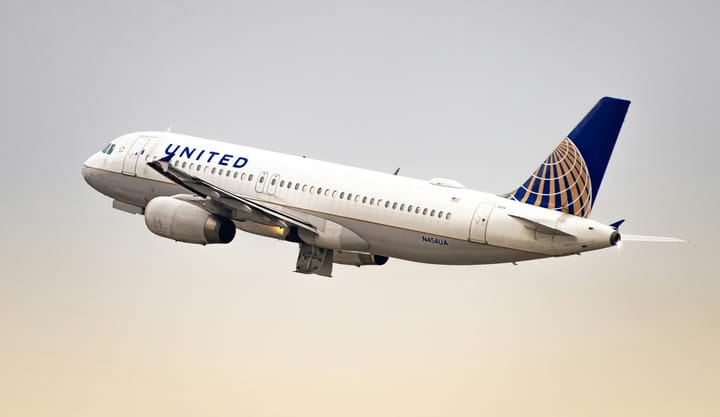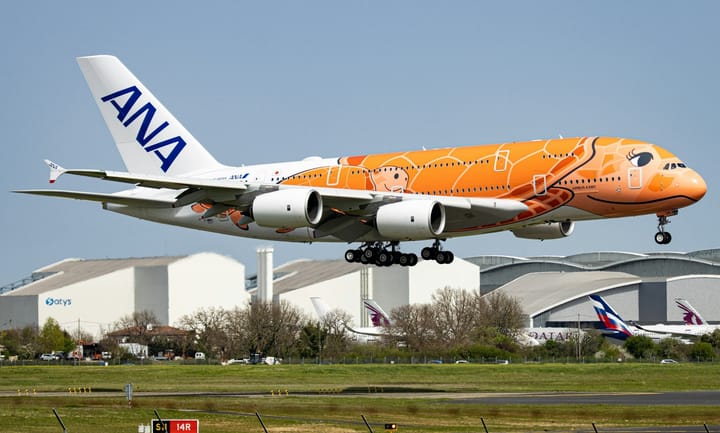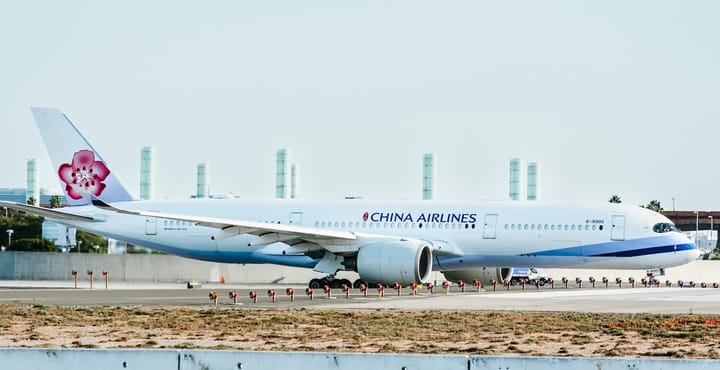Spirit Airlines reflects the high-volume, low-cost dynamic shaping today’s aviation market—balancing dense seat capacity with rising operational complexity and financial pressures across a post-pandemic recovery landscape.
1. Total Passengers Carried
Spirit’s annual passenger traffic rebounded strongly after the COVID slump. In 2023 Spirit flew about 44 million passenger segments, well above the 34.9 million carried in 2019. This reflects expansion of its route network and fleet. The trend shows continuous growth: roughly 30.77 M segments in 2021, 38.4 M in 2022, and 44 M in 2023. The surge was driven by leisure travel demand as pandemic restrictions eased, particularly on cost-sensitive routes.
The COVID-19 pandemic caused a dramatic drop in traffic. Spirit carried only about 18.3 M passenger segments in 2020, down sharply from 33.86 M in 2019. That roughly 46% plunge matches the industry-wide collapse in air travel. Domestic leisure routes (Florida, Caribbean, Latin America) were most affected as lockdowns and international border closures limited flying. Even Spirit’s core short-haul markets saw steep declines, illustrating the pandemic’s broad impact on low-cost carriers.
Traffic recovered through 2021–2023. In 2021 Spirit’s segments rose to about 30.77 M (+68% vs 2020), and to 38.4 M in 2022 (+25%). By 2023 the airline surpassed its 2019 level, reflecting returned consumer confidence and pent-up demand. Ancillary services and leisure packages also boosted bookings. Spirit’s focus on Caribbean and Latin American destinations helped its rebound; these markets reopened earlier and saw strong vacation travel. Overall, the last five years show a U-shaped recovery for Spirit’s passenger count.
Spirit serves both domestic and international markets, though its numbers are dominated by U.S. point-to-point flying. Its network grew in recent years, adding new U.S. cities and expanding Caribbean service. For example, Spirit launched or resumed flights to markets like Raleigh–Durham, San Antonio and San Juan, drawing new customers. Its ultra-low-cost model (with high-density seating) allows more passengers per flight than many rivals.
On operational achievements, Spirit maintains rigorous standards despite rapid growth. For the sixth consecutive year, Spirit’s maintenance technicians earned the FAA’s Diamond Award of Excellence, reflecting 100% FAA-certified training. This underlines Spirit’s emphasis on safety and reliability even as it scales up. In terms of milestones, surpassing 40 M annual passengers in 2022–2023 established Spirit as a top-tier ULCC. Its large onboard counts and expanding route map (Florida hub FLL is ~23% of capacity) speak to the success of its passenger growth strategy.
2. Total Flights Operated
Spirit’s flight operations expanded markedly post-2020. Total annual departures increased from 211,779 in 2021 to 259,625 in 2022 and 296,262 in 2023. That is roughly 811 flights per day by 2023, up from about 580 per day in 2019. The airline grew its fleet in tandem: average operating aircraft rose from 153 in 2020 to 200 in 2023. Newer Airbus A320/A321 planes and phased retirement of older A319s (29 A319s removed in late 2022) enabled more sorties. Overall fleet utilization also ticked upward: average daily aircraft utilization went from 10.7 hours (2022) to 11.1 hours (2023).
Spirit’s growth in flight activity reflects network expansion. It added dozens of daily flights into markets like Chicago, Detroit, and San Antonio, opening new routes. Even hubs like Fort Lauderdale (FLL), Orlando and Las Vegas saw more service. For example, departures climbed 14% in 2023 alone. Seasonal scheduling is intense: Spirit often operates close to 24-hour daily service at its bases. The result is that, despite a fleet size smaller than the Big Four carriers, Spirit’s annual flight count makes it one of the busier airlines by flight volume in the U.S.
Spirit’s operational model emphasizes frequency. Its short-haul focus means many medium-length flights, allowing multiple turns per day. For instance, a Spirit A321 out of Fort Lauderdale might fly five sectors daily to various Caribbean and U.S. destinations. The airline supplements point-to-point flying with limited connecting traffic. Frequent flights to leisure destinations during peak seasons help pack seats on each departure. This route structure has enabled Spirit to nearly double its departures since 2016 (~149k).
Despite rapid growth, Spirit manages flight operations efficiently. Turnaround times at airports are kept low, and high-density cabin layouts mean more passengers per flight. Spirit also leverages contracts with major airports: FLL remains its largest base (~23% of 2022 capacity), complemented by service at Dallas/Fort Worth, Baltimore/Washington, and other facilities. However, the airline’s expansion has not been without challenges. Increased flights require more crew and support staff, leading to union negotiations (e.g. new pilot and flight attendant contracts) in 2022–2023. Managing this growth while maintaining on-time performance is a key operational focus.
In mid-2023, Spirit had the highest number of weekly flights of any ULCC on several U.S. city pairs (e.g. Fort Lauderdale–JFK, Orlando–ORD). The airline also won recognition for operational training: aside from the maintenance award, Spirit’s flight operations team received an industry honor (Airline of the Year short-haul) in 2019. These accolades underscore that Spirit’s operational scaling has been technically solid, even if customer satisfaction ratings remain middling relative to majors.
3. Available Seat Miles (ASM)
Spirit’s seat capacity (ASMs) has tracked its fleet and flight growth. In 2020 the airline operated about 27.9 billion ASMs (thousands of seat-miles); this plunged from 41.8 B in 2019 due to COVID. As travel rebounded, ASMs climbed to 40.75 B in 2021 and 48.57 B in 2022. By 2023 ASMs reached roughly 55.63 B, a year‑over‑year increase of 14.5%. That final level exceeds 2019 capacity by over 33%, reflecting Spirit’s aggressive growth plan in recent years.
High-density seating configurations support this capacity expansion. Spirit fits more seats per aircraft than legacy carriers: for example, its A320s often have 186+ seats (vs ~150 at others). Coupled with fleet growth, this produced record ASMs. In practical terms, Spirit has enlarged its capacity primarily with short- to medium-haul planes (Airbus A320/A321 families) optimized for high turnarounds. The average stage length (about 1,000 miles) kept seat-mile output high. As a low-cost carrier, maximizing ASM per aircraft-hour is part of Spirit’s model to spread fixed costs.
Despite rising ASMs, Spirit has been careful not to oversupply the market. The load factor (see next section) remained above 80% through 2022–2023, indicating balanced capacity. Management has cited unit capacity growth targets of mid-teens percentage annually (when demand permits).
Achieving ~100% ASM growth from 2020 to 2023 required taking many planes out of parking and returning them to service, as well as accelerating new aircraft deliveries. This drew Spirit’s seat output into line with some majors; in North America Spirit’s 2023 ASMs would rank it among the top dozen carriers by capacity.
From an industry perspective, Spirit’s ASM growth outpaced the larger U.S. market in 2021–2023, as lower-cost carriers captured more price-sensitive travelers. The airline also uses capacity for ancillary yields: more seats mean more opportunities to sell bags, seats, and fees. This flexibility was evident in 2023’s network expansion. For example, Spirit briefly tested longer routes (e.g. Fort Lauderdale–Bogotá) to tap new demand, supported by its higher seat count per flight.
4. Revenue Passenger Miles (RPM)
RPMs measure how many seat-miles were actually filled by paying customers. Spirit’s RPMs climbed back near pre-pandemic levels. After falling to ~19.3 B in 2020, RPMs recovered to 32.12 B in 2021 and 39.78 B in 2022. By 2023 RPMs were about 45.23 B – a 13.7% rise over 2022. That 2023 volume even slightly exceeds 2019’s 35.25 B. The continuous RPM growth in 2021–23 reflects filled seats scaling with capacity increases, even as fares softened.
Spirit’s strong RPM growth indicates robust demand recovery. The airline’s pricing strategy – high volume of low fares plus heavy ancillary charges – drove traffic. In 2022 and 2023 revenue per passenger dropped year-over-year (fare per flight segment fell from $63.85 in 2022 to $53.01 in 2023), but the number of passengers grew faster. This tradeoff increased RPMs. In fact, Spirit’s load factor stayed above 78% even as ASMs rose, showing that seat inventory was being consumed by travelers. Carriers in leisure markets saw this effect worldwide: Spirit’s RPM growth paralleled U.S. leisure traffic trends, with buoyant summer travel and holiday peaks.
The RPM/ASM ratio (load factor) hovered around 81% by 2023 (see next section for detail). This means nearly 4 out of 5 available seat-miles were paid for. For context, in 2023 Spirit flew about 55.63 B ASMs and earned 45.23 B RPMs. The slight dip in load factor in 2023 (from 81.9% in 2022 to 81.3%) shows that RPMs grew a bit slower than ASMs – a consequence of adding capacity during a period of moderating demand. Still, holding a high 81% load factor at such scale is notable and reflects effective revenue management.
Spirit filled more seats on expanded routes (e.g. new service to Latin American destinations, and more frequent U.S. flights) as well as existing ones. The ULCC model means many shorter point-to-point itineraries, which typically achieve high load factors. Compared to 2019, Spirit now carries roughly 28% more RPMs while offering 33% more ASMs. The modest difference implies Spirit is slightly underfilling the new seats it added (hence the slight load factor erosion), but overall demand recovery has kept RPM growth very strong.
Spirit’s passenger revenue (fare + fees) mirrors the RPM trends. In 2023 total passenger revenue was $5.268 B, up 5.6% from 2022. Most of that increase came from passenger volume (+13.7% RPM), partially offset by a 7.0% yield decline. Non-ticket revenue (fees, ancillaries) grew even faster, by 15.6% to $2.93 B, helping to lift total revenue per passenger despite lower base fares.
5. Passenger Load Factor (%) Analysis
Spirit has historically maintained high load factors thanks to its pricing and flight frequency. In 2019, load factor was 84.4%. By 2021 it rebounded to 78.8% and then to 81.9% in 2022. In 2023 it was 81.3% – slightly below 2022. Overall, Spirit returned to the low-80% range post-pandemic.
One operational insight is that Spirit’s dense cabin (sometimes 184–230 seats per plane depending on type) creates a high break-even load factor threshold. That is, more seats must be sold to cover fixed costs. Fortunately, Spirit’s discount pricing tends to drive strong bookings, as evidenced by past years where it consistently flew at ~83–84% full. The 2020–2021 period was an outlier due to exogenous shock. As of 2023, Spirit’s load factors indicate it is once again operating near its typical historical efficiency.
In industry comparison, a load factor over 80% is generally considered strong for US carriers. Spirit’s achievement of ~82% in 2022–2023 means it effectively filled seats despite competitive fare wars. This is notable because many legacy carriers saw their load factors lag in 2023 as they added more premium inventory.
6. Financial Performance Analysis
6.1. Operating Revenue ($) Performance
Spirit’s total operating revenue jumped back toward pre-pandemic levels through 2021–2023. The airline earned $3.231 B in 2021, $5.068 B in 2022, and $5.363 B in 2023. That is a 56.9% increase in 2022 (versus 2021) and another 5.8% in 2023. Most of 2022’s surge was due to traffic recovering (+23.8% RPM, +24.8% segments); yields also rose in 2022. In 2023 revenue growth slowed because yields softened: total revenue grew modestly despite a 13.7% jump in traffic.
• Spirit’s 2023 revenue breakdown shows how its ultra-low-cost model works in practice.
• Base fare revenue fell 4.8% to $2.338 billion, mainly due to fare competition and aggressive promotional pricing.
• At the same time, non-fare (ancillary) revenue jumped 15.6% to $2.930 billion, highlighting Spirit’s reliance on extras like baggage, seat fees, and subscriptions.
• The airline also brought in another $94 million from other sources like charters.
• Average jet fuel prices dropped to $3.08 per gallon in 2023 — down 15.8% from 2022 — giving Spirit some breathing room on fare increases.
• Lower fuel costs made it easier to stimulate demand with lower fares, which helped fill more seats.
• Unit revenue per available seat mile (TRASM) declined 7.8%, falling to 9.63¢ from 10.44¢ the year before.
• That drop in TRASM was mainly due to a 7.0% decrease in yield, meaning each seat-mile earned less money on average.
• Still, Spirit managed to grow total revenue by flying fuller planes, even with lower average fares.
• This reflects the broader trend in 2023 where airlines prioritized volume over pricing as post-pandemic demand recovered.
Spirit’s revenue performance has some unique elements. For example, in late 2022 the airline’s stockholders approved a merger with JetBlue. As part of that deal, Spirit received one-time payments (e.g. a $2.50/share “approval” payment). These payments were recorded as a special gain (credit) in late 2022. In fact, the 2022 financials include a roughly $420 M special “credit” that year, which boosted reported operating results. By 2023 this special item was mostly behind (2023 saw smaller charges/credits of $69 M).
6.2. Net Income ($) Analysis
Spirit has operated at a loss in recent years. The company reported a net loss of ~$472 M in 2021, ~$554 M in 2022, and ~$447 M in 2023. In percentage terms, the 2023 loss margin was about 8.3% of revenue ($5.363 B), down from 10.9% in 2022. The narrowing loss in 2023 reflects strong revenue growth and some cost tailwinds (e.g. lower fuel and insurance costs). Still, Spirit remained unprofitable, as is common for ultra-low-cost carriers during rapid growth phases.
• One of the biggest cost drivers in 2023 was fuel. Spirit burned 591.8 million gallons, up 12.2% from 2022, so even though fuel prices dropped to $3.08/gal, total fuel expense stayed high.
• Fuel can account for up to one-third of total operating costs, so volume increases can outweigh per-gallon savings.
• Spirit’s fixed costs—including aircraft leases, labor, and airport fees—remain high relative to the revenue they generate per seat.
• While cost per available seat mile (CASM) dropped 9.9% to 10.52¢, that’s still higher than the unit revenue (TRASM) of 9.63¢, which means each seat-mile operated at a loss.
• In 2023, labor costs increased due to new union contracts, leading to 6–7% growth in total payroll and benefits.
• These wage increases offset some of the efficiency gains from higher capacity and cost spreading.
• In 2022, Spirit reported a $420 million accounting credit tied to the JetBlue breakup fee, which temporarily lowered reported expenses.
• Without that one-time credit, Spirit’s 2022 loss would have been much higher than reported.
• By contrast, 2023 had just a $69 million one-time charge for branch closures and asset write-downs, offering far less of a cushion.
• On a core basis, Spirit’s operating loss actually improved slightly: $496 million in 2023 versus $553 million in 2022, showing modest progress despite headline losses.
Spirit’s financial performance is also affected by interest costs and debt. The 10-K shows non-operating expenses (interest and other items) of $101.8 M in 2023, versus $463.4 M in 2021. Much of the 2021 figure was due to fuel hedging losses and debt interest. By 2023, Spirit had reduced debt and benefited from lower interest rates, keeping non-operating expense modest. Tax-wise, Spirit had a $111 M tax benefit in 2023, reducing the net loss. (Spirit carried large net operating loss balances, so its tax provision often fluctuates with one-time credits.) Overall, financing and taxes shaved ~$111 M from the 2023 loss, compared to $146 M benefit in 2022.




Comments ()